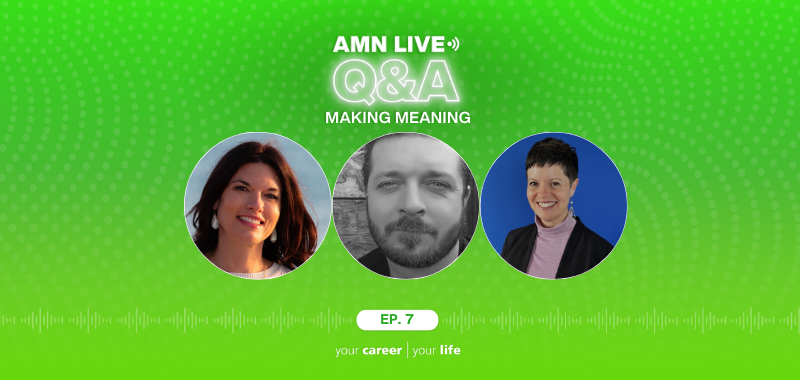
Language Services Live Q&A Ep. 7 - Co-Interpreting; American Sign Language and Certified Deaf Interpreters
On December 18th, AMN Healthcare hosted an engaging and insightful AMN Live Q&A session, "Making Meaning," focused on the art of collaborative interpreting with American Sign Language (ASL) and Certified Deaf Interpreters (CDIs). Led by host Kristen Burk with guests Jeremy Quiroga and Kelly Matamoros, the event explored the unique dynamics of teaming in interpreting, offering valuable tips, strategies, and real-world insights for language professionals. Designed to support interpreters and those interested in culturally competent communication, the session highlighted best practices for effective teamwork, ethical considerations, and maintaining accuracy when serving Deaf and Hard of Hearing individuals with diverse needs.
Topics of Discussion:
What is the Role and Significance of Co-interpreting?
Co-interpreting, which pairs an ASL interpreter with a Certified Deaf Interpreter (CDI), goes beyond the traditional model. It’s an equal collaboration where both interpreters bring unique skills to enhance communication. CDIs provide cultural insights and language intuition, especially during complex, high-context interactions.
Why is CDI Collaboration Valuable?
Certified Deaf Interpreters (CDIs) play a vital role in bridging communication gaps and supporting the Deaf community. They ensure precise interpretation while offering emotional comfort, creating a space where Deaf individuals feel fully understood. This is particularly crucial in sensitive settings like medical appointments or vital service interactions.
How Can Interpreters and CDIs Ensure Effective Collaboration?
Collaboration requires adaptability. Interpreters and CDIs should remain flexible and foster trust, mutual respect, and open communication. As Kelly said, "Be like water," emphasizing the importance of teamwork for seamless interpreting.
Why is Preparation Important for Interpreting Assignments?
Preparation is essential to ensure smooth communication. This involves discussing the client’s needs, the interaction’s context, cultural nuances, and potential vocabulary. Thorough preparation minimizes misunderstandings and enhances the interpreting experience.
How Can Technology Improve Interpreting?
Technology, such as video relay services (VRS) or remote interpreting platforms, expands accessibility in interpreting. However, interpreters should be proficient and confident in using these tools to avoid technical issues that could disrupt assignments.
Why is Continuing Education Important For Interpreters?
Ongoing professional development keeps interpreters up-to-date with best practices, cultural changes, and field advancements. Workshops, webinars, and training sessions are invaluable for staying sharp and delivering high-quality work.
How Can Interpreters Practice Self-care?
Interpreting is mentally and emotionally demanding, making self-care essential. Regular breaks, mindfulness practices, and seeking support help interpreters maintain focus, energy, and prevent burnout, ensuring they can deliver their best work.
How Does AMN Healthcare Support Interpreter Growth?
AMN Healthcare is committed to fostering collaboration and professional growth for interpreters. With resources, training, and opportunities, they empower interpreters to sharpen their skills and work alongside industry leaders. Interested in joining the team? Explore language interpreter opportunities with AMN Healthcare today!

